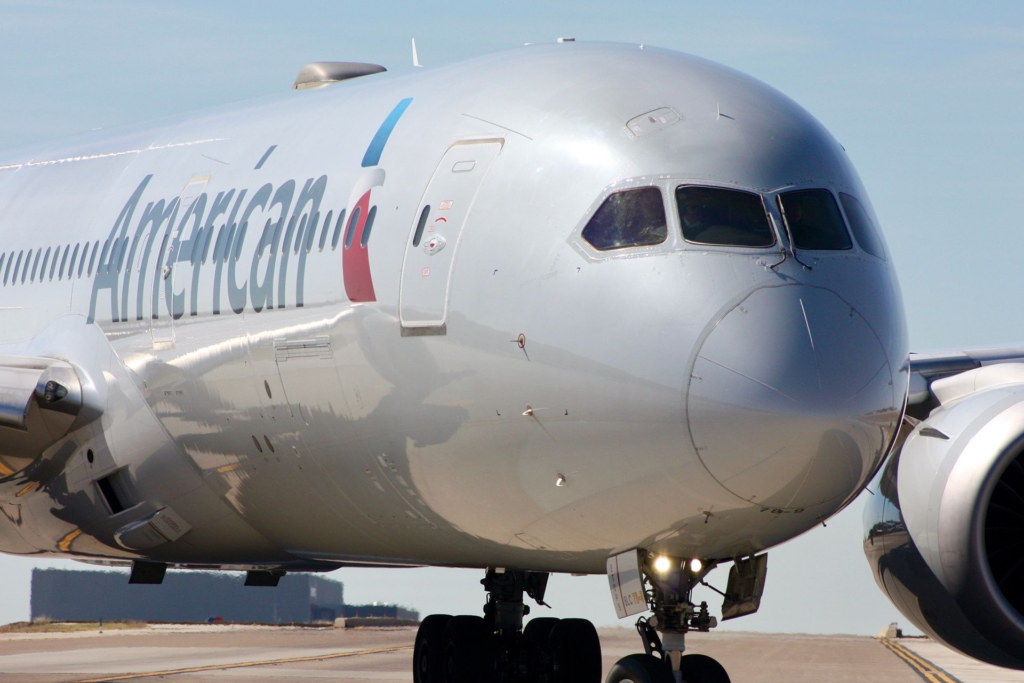In recent years,
From the new record breaker between
Ultra-Long-Haul Global Connectivity: 7,000 To 9,000 Miles
Several of American Airlines’ ultra-long-haul routes fall in the 7,000–9,000-mile range, linking the United States with key destinations across the world. The longest such example is Dallas/Fort Worth International (DFW) to Brisbane Airport (BNE), measuring about 8,299 miles. American has around 144 flights in each direction scheduled on this route for the 787-9 this year, offering nearly 39,000 seats per leg. This nonstop service connects Texas to Australia’s third-largest city, reflecting growing demand for transpacific travel beyond traditional gateways like
Another important market is DFW to
In Asia, the DFW to
Long-Haul Transoceanic And Intercontinental Services: 5,000 To 7,000 Miles
Several of American’s transoceanic flights fall within the 5,000–7,000-mile range, connecting the US to South America, Europe, and parts of Asia. A prime example is
On the South America front, the DFW to Buenos Aires’ Ezeiza International Airport (EZE) route spans 5,286 miles. With around 66 flights each way and more than 16,000 seats. Similarly, the DFW to Sao Paulo Viracopos International Airport (GRU), at 5,111 miles, is a heavy hitter with 366 flights each way and more than 103,000 seats per direction. These connections are vital for trade and multinational corporate travel between the US and South America.
American also deploys its Boeing 787-9s on several transatlantic routes in this mileage band. For example,
A Comparison Of American’s Longest Routes
Routes in the 5,000–7,000-mile bands form the backbone of American’s long-haul portfolio. These services generate over 850,000 seats and account for the largest share of long-haul ASMs. Markets such as New York–Tokyo Haneda, Philadelphia–Doha, and Dallas–São Paulo are the strongest contributors.
By contrast, the 7,000–9,000-mile band features far fewer flights, just over 1,000 annually, but represents some of the most prestigious and demanding ultra-long-haul markets, showcasing the range and capability of the 787-9. Routes such as Dallas–Brisbane, Dallas–Auckland, and Dallas–Shanghai fall in this category, linking the US directly with Oceania and East Asia. While the seat totals are smaller at 297,000, the strategic importance is high, since these markets capture long-haul leisure demand, premium business travel, and alliance-driven connectivity.
|
Mileage Band |
Flights |
Seats |
ASMs (Available Seat Miles) |
Avg. Distance (Miles) |
|---|---|---|---|---|
|
5,000–7,000 |
3,039 |
859,760 |
5.24 billion |
~5,986 |
|
7,000–9,000 |
1,059 |
297,059 |
2.26 billion |
~7,696 |
When comparing the two, it’s clear that the 5,000–7,000-mile routes deliver higher seat and frequency volumes, supporting steady traffic flows between established business and cultural hubs. Meanwhile, the 7,000–9,000-mile flights, though fewer, extend American’s global reach and diversify its network. Together, they illustrate American Airlines’ long-haul strategy, consolidating its strength in medium- to long-haul transoceanic travel while competing in the ultra-long haul arena, where stage length and operating efficiency become key differentiators.
Balancing Domestic And Overseas Connectivity: 2,000 To 5,000 Miles
The 2,000–5,000-mile segments include many of American’s transatlantic services, linking US hubs to Europe. A strong example is the
The mileage band also encompasses some of Americans’ busiest South American routes. For example, JFK to Sao Paulo Viracopos International Airport (GRU) at 4,745 miles offers 366 annual flights each way, with over 104,000 seats. Similarly, the European connection, Dallas/Fort Worth to
The following table displays the top 5 routes in the 2000–5000 mile category ranked by ASMs.
|
Route |
Distance (miles) |
Flights |
Seats |
ASMs (Available Seat Miles) |
|---|---|---|---|---|
|
LHR–ORD |
3,953 |
933 |
245,487 |
970,410,111 |
|
ORD–LHR |
3,953 |
933 |
245,405 |
970,085,965 |
|
LHR–PHL |
3,546 |
576 |
156,124 |
553,615,704 |
|
PHL–LHR |
3,546 |
576 |
156,083 |
553,470,318 |
|
GRU–JFK |
4,745 |
366 |
104,310 |
494,950,950 |
A smaller set of routes in this band also includes US domestic services where the 787-9 is deployed selectively. For example, Honolulu International Airport(HNL) to Dallas/Fort Worth, which measures 3,784 miles, with a limited six flights per direction, while PHL to LAX operates at 2,401 miles with only 12 round-trips annually. These deployments are often driven by fleet utilization needs or seasonal demand. Collectively, the 2,000–5,000-mile routes illustrate American’s strategy of using the 787-9 to anchor core transatlantic and South American services, while flexibly assigning it to domestic or near-international markets when capacity or aircraft range aligns with network requirements.
Widebody Deployments On Short-Haul Routes: Under 2,000 Miles
American deploys the 787-9 on only a handful of very short-haul routes under 2,000 miles, and these appear to be primarily for positioning, capacity balancing, or seasonal peak demand. One of the shortest is the DFW to
Another notable short sector is DFW to
On the East Coast,
A Widebody At Work Across the World
American Airlines’ 2025 schedule shows the Boeing 787-9 being deployed across a wide variety of routes, from short domestic sectors under 1,000 miles to ultra-long-haul flights over 8,000 miles. In total, the aircraft will operate more than 12,000 flights, carrying about 3.4 million seats and producing over 16.5 billion Available Seat Miles (ASMs).
The bulk of operations fall in the 5,000–7,000-mile range, covering transatlantic markets from Philadelphia and New York, as well as major South American hubs like São Paulo and Buenos Aires. These routes are among the busiest in the network, with daily or near-daily service and strong demand from both corporate and leisure travelers. They form the backbone of American’s international connectivity.
At the extreme ends, the 787-9 supports tactical domestic deployment to meet capacity needs and also operates strategic ultra-long-haul services. Together, this pattern highlights the aircraft’s flexibility, balancing reliable worldwide coverage with the adaptability to cover short deployments, making the 787-9 a cornerstone of American’s fleet.

